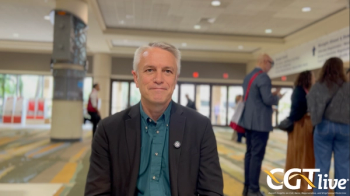
FDA Approves StemCyte’s Cord Blood Cell Therapy Regenecyte for Unrelated Donor Hematopoietic Progenitor Cell Transplantation Procedures
The FDA’s decision was based on data from 3 different sources.
The FDA has approved StemCyte’s Regenecyte, an allogeneic hematopoietic stem cell therapy derived from human umbilical cord blood, for use in unrelated donor hematopoietic progenitor cell transplantation procedures alongside an appropriate preparative regimen for hematopoietic and immunologic reconstitution in patients with inherited or acquired disorders affecting the hematopoietic system, including those resulting from myeloablative treatment.1
"With one of the largest inventories of cord blood stem cells worldwide, StemCyte is uniquely positioned to supply, manufacture, and develop advanced cell therapy products," Tong Young Lee, PhD, the chief executive officer of StemCyte, said in a statement.1 "Looking ahead, we are committed to driving the development of innovative therapies, achieving sustainable growth through diversified business strategies, and solidifying our position as a global leader in the field of cell therapy."
The FDA’s decision was based on data from the COBLT clinical trial (Study 1), a retrospective review of data from literature and observational studies (Study 2), and data from the Center for International Blood and Marrow Transplant Research (Study 3).2 Among 324 patients treated in Study 1, 76% achieved neutrophil recovery at 42 days posttreatment (Day 42) (71%, 81%)(ANC >500/µL) (95% CI), 57% achieved platelet recovery at Day 100 (51%, 63%) (20,000/uL) (95% CI), and 65% achieved erythrocyte recovery at Day 100 (58%, 71%) (95% CI). The median time to neutrophil recovery was 27 days, the median time to platelet recovery was 90 days, and the median time to erythrocyte recovery was 64 days. Among 1299 patients treated in Study 2, 77% achieved neutrophil recovery at Day 42 (75%, 79%) (95% CI) and 45% achieved platelet recovery at Day 100 (50,000/uL) (95% CI) (42%, 48%). The median time to neutrophil recovery was 25 days and the median time to platelet recovery was 122 days. Among 54 patients treated in Study 3, 91% achieved neutrophil recovery at Day 42 (81%, 97%) (95% CI) and 72% achieved platelet recovery at Day 100 (20,000/uL) (58%, 83%) (95% CI). The median time to neutrophil recovery was 22 days and the median time to platelet recovery was 50 days.
With regard to safety, the package insert for Regenecyte lists the most common infusion-related adverse reactions from a pooled safety population for Regenecyte as hypertension, vomiting, nausea, bradycardia, and fever. Furthermore, warnings and precautions for Regenecyte include hypersensitivity reactions (bronchospasm, wheezing, angioedema, pruritus, and hives), infusion reactions, graft versus host disease, engraftment syndrome, graft failure, malignancies of donor origin, transmission of serious infections, and transmission of rare genetic diseases. The product is contraindicated for patients with known sensitivity to dimethyl sulfoxide (DMSO), Dextran 40, or plasma proteins.
CGTLive® has previously
“For doctors and the broader healthcare community, we take this opportunity to educate them and tell them cord blood donation is a safe, simple, and painless procedure,” Wang told CGTLive. “It does not harm the mother and doesn't harm the baby. It can be done easily in any hospital that participates in a cord blood bank program.”
REFERENCES
1. U.S. FDA approves StemCyte biologics license application for REGENECYTE™ cord blood cell therapy product. News release. StemCyte Inc. November 22, 2024. Accessed November 26, 2024. https://www.prnewswire.com/news-releases/us-fda-approves-stemcyte-biologics-license-application-for-regenecyte-cord-blood-cell-therapy-product-302313955.html
2. Package Insert and Instructions for Preparation for Infusion – Regenecyte. StemCyte Inc. 2024. Accessed November 26, 2024. https://www.fda.gov/media/183744/download?attachment#xd_co_f=NmRjOTgxMTgtMDk4OC00YjJmLWE3ZjEtZWMyMWI5YTMyOGQ3~
Newsletter
Stay at the forefront of cutting-edge science with CGT—your direct line to expert insights, breakthrough data, and real-time coverage of the latest advancements in cell and gene therapy.




































